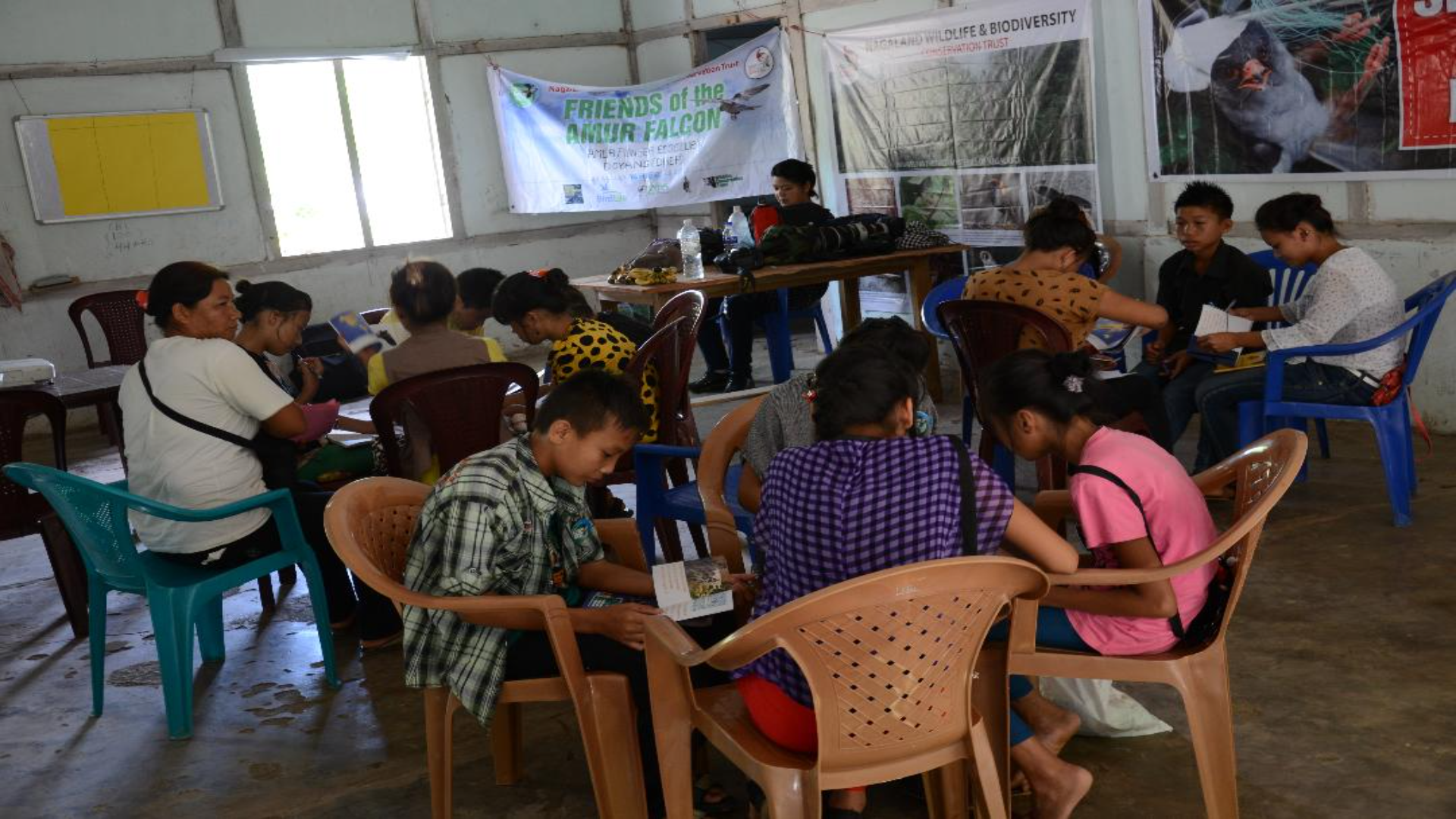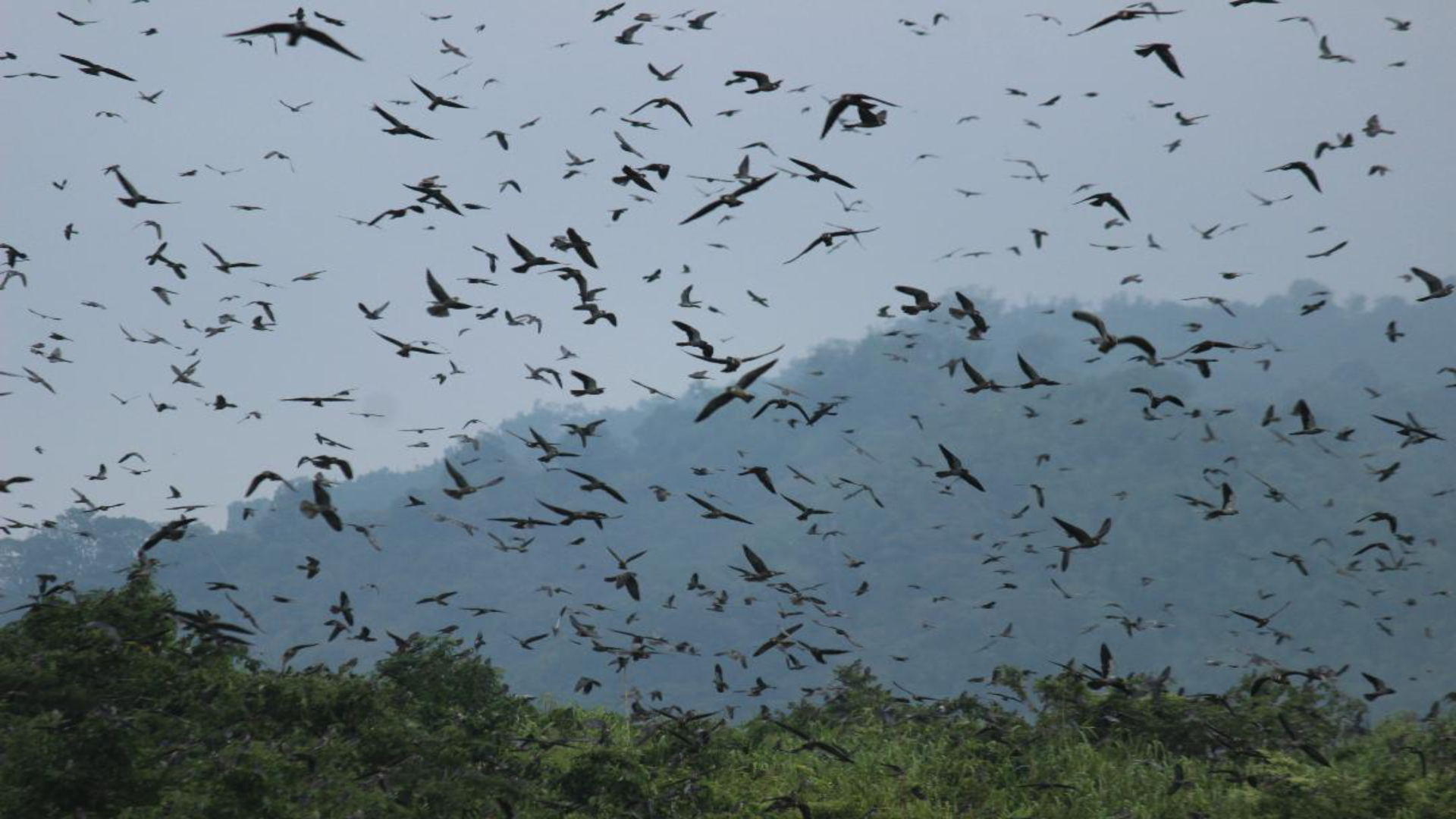
South African court dismisses a major lawsuit by 140,000 Zambian women and children against Anglo American for Kabwe lead poisoning. A setback for affected communities enduring the lasting impact of lead contamination.
India’s Nagaland state, which fell into disrepute for the mass killings of Amur falcons, has become the global conservation capital for the migratory bird.
Bano Haralu remembers with sadness the days when her state made headlines for all the wrong reasons. Bano, a veteran journalist and conservationist, lives in Nagaland state in northeast India, a region known for its natural beauty and idyllic mountains.
“It was really painful to read news of the migratory Amur falcons (Falco amurensis) being brutally slaughtered in our state. The year was 2012 and across almost the media there was news of some 12000-14000 birds being caught and slaughtered each day during their annual roosting in Nagaland. It brought disrepute to our state, which is known for its hospitality towards guests, and left us shocked and embittered.”
Amur falcons arrive in Nagaland between October and December every year. The birds briefly stop there for their annual roosting before continuing their migration from Siberia to southern Africa. The falcons cover a staggering 22,000 kilometres every year, earning the distinction of being one of the longest-flying migratory birds in the world.
These birds spend the summer in their breeding grounds in southeast Russia and northeast China before setting off on their journey, roosting briefly in Nagaland and then crossing the Arabian Sea so they can spend the winter in southern Africa. Amur falcons mostly feed on termites and other insects, an insectivorous diet that sustains them on the long journey. Their overwintering coincides with the time when seasonal rains ensure the presence of insect swarms, making South Africa a perfect feeding ground.
“The birds roost at a hill called Tzuza Eryu, in the village of Pangi, which is located in Wokha district, around 80 kilometres from Nagaland’s capital Kohima. The locals used to trap the falcons using nets before slaughtering them. The killings brought lucrative income, both through meat sales at the local market and use for personal consumption,” says Bano, who is also the managing trustee of the Nagaland Wildlife & Biodiversity Conservation Trust, a non-profit that focuses on wildlife conservation education.
“The killings also happened before 2012 but the administration didn’t take any action to stop them. The global outrage in 2012 rattled the entire state, government included, and finally Nagaland woke up from its deep stupor. Even the locals felt a sense of humiliation for having garnered global attention in such a negative way.” Bano says that the state government, along with locals and environment enthusiasts, decided to rebuild the state’s image, which had taken a severe hit because of the mass killings. However, this was easier said than done because so many of the locals were involved in the killings due to the income they brought.
Non-profits and environmental activists realized that the major reason for the villagers ruthlessly killing these birds was a lack of awareness. Therefore, the Bombay Natural History Society (BNHS), a wildlife research organization working alongside Bano’s conservation trust, set up Eco-Clubs in Pangti village in 2013 to educate the local youth – particularly children – about the importance of conserving the bird.
Lijon Ngullie 37, a resident of Pangti and one of the teachers in the Eco-Clubs, says that it was challenging for them to restore the crushed image of the village. “We decided to create awareness among the children because they serve as an emotional connection to their parents: often it becomes difficult for the family members to evade their honest and innocent advice. The children, mostly in the 12-16 age group, were provided with books on the importance of protecting the falcons and conserving the environment. They were taught to draw different kinds of fauna, look at the wildlife around them and learn its names,” says Lijon.
“The children were also taught about the Amur falcon, learning of its extremely long journey to reach our village and our mistreatment of them. It made them really emotional. They went home and created awareness among their parents against the killings.”
The Eco-Clubs played a major role in changing the perspective of local people towards the birds and their conservation. At present, the clubs are running in 3 villages including Pangti and 36 children are studying in them, with classes held once a week. The state government also played a major role, with Chief Minister Neiphiu Rio making a surprise visit to the area in November 2013 and appealing to all locals to “extend hospitality” towards their “esteemed guests”.
The result of all this work became apparent in 2013, with no killings reported during that autumn. This was perhaps one of the most successful examples of conservation through education, with the mass slaughter of falcons having been stopped within a year. “It was possible because the locals were dismayed by the global anger and really wanted to do something to create a better image of the state. The awareness campaigns played a major role in changing their mindset, from hunters to protectors,” says Lipenthung Jami, 48, a resident of Pangti who worked on the awareness campaign. Since then, Nagaland has welcomed its annual guests every year with open arms.
“We are now sighting the birds in the Mokukchung, Mon, and Longleng districts of the state, which means that the falcons are flocking here in larger numbers. There have been sightings even in neighbouring states, like Meghalaya, which leads us to believe that their numbers are increasing. However, the absence of a census makes it difficult to arrive at any conclusion about exact population trends. The conservation effort has helped us to boost tourism and now the villages attract tourists from within and outside the state. Amur falcons have now become a more sustainable source of livelihood for the villagers.”
Clitus Angamis, 35, an environment enthusiast who lives in Kohima, is thrilled to have witnessed this story of successful conservation. “I think it’s one of the most successful stories of conservation in the entire world. The eagerness of the locals to shed their negative image has led to astounding results. It clearly shows that we can conserve our environment only if we seriously want to protect it. The world should take lessons from us and try to protect the species that are on the verge of extinction.”
Siamo anche su WhatsApp. Segui il canale ufficiale LifeGate per restare aggiornata, aggiornato sulle ultime notizie e sulle nostre attività.
![]()
Quest'opera è distribuita con Licenza Creative Commons Attribuzione - Non commerciale - Non opere derivate 4.0 Internazionale.
South African court dismisses a major lawsuit by 140,000 Zambian women and children against Anglo American for Kabwe lead poisoning. A setback for affected communities enduring the lasting impact of lead contamination.
Controversial African land deals by Blue Carbon face skepticism regarding their environmental impact and doubts about the company’s track record, raising concerns about potential divergence from authentic environmental initiatives.
Majuli, the world’s largest river island in Assam State of India is quickly disappearing into the Brahmaputra river due to soil erosion.
Food imported into the EU aren’t subject to the same production standards as European food. The introduction of mirror clauses would ensure reciprocity while also encouraging the agroecological transition.
Sikkim is a hilly State in north-east India. Surrounded by villages that attracts outsiders thanks to its soothing calmness and natural beauty.
Sikkim, one of the smallest states in India has made it mandatory for new mothers to plant saplings and protect them like their children to save environment
Chilekwa Mumba is a Zambian is an environmental activist and community organizer. He is known for having organized a successful lawsuit against UK-based mining companies.
What led to the Fukushima water release, and what are the impacts of one of the most controversial decisions of the post-nuclear disaster clean-up effort?
Nzambi Matee is a Kenyan engineer who produces sustainable low-cost construction materials made of recycled plastic waste with the aim of addressing plastic pollution and affordable housing.










